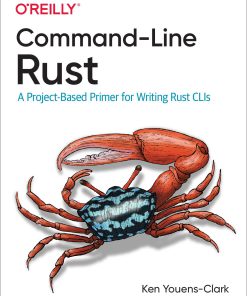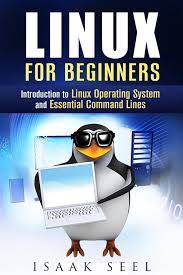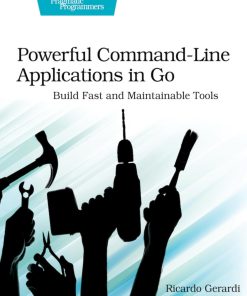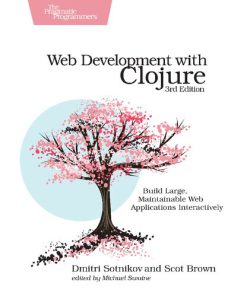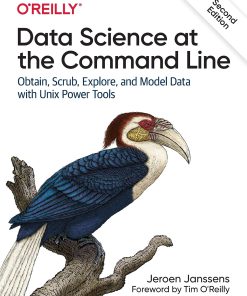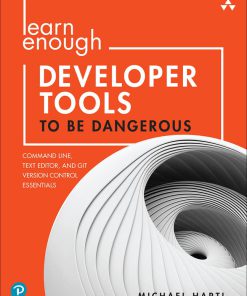Powerful Command Line Applications in Go Build Fast and Maintainable Tools 1st Edition by Ricardo Gerardi 168050696X 9781680506969
$50.00 Original price was: $50.00.$25.00Current price is: $25.00.
Powerful Command Line Applications in Go Build Fast and Maintainable Tools 1st Edition by Ricardo Gerardi – Ebook PDF Instant Download/Delivery: 168050696X, 9781680506969
Full download Powerful Command Line Applications in Go Build Fast and Maintainable Tools 1st Edition after payment
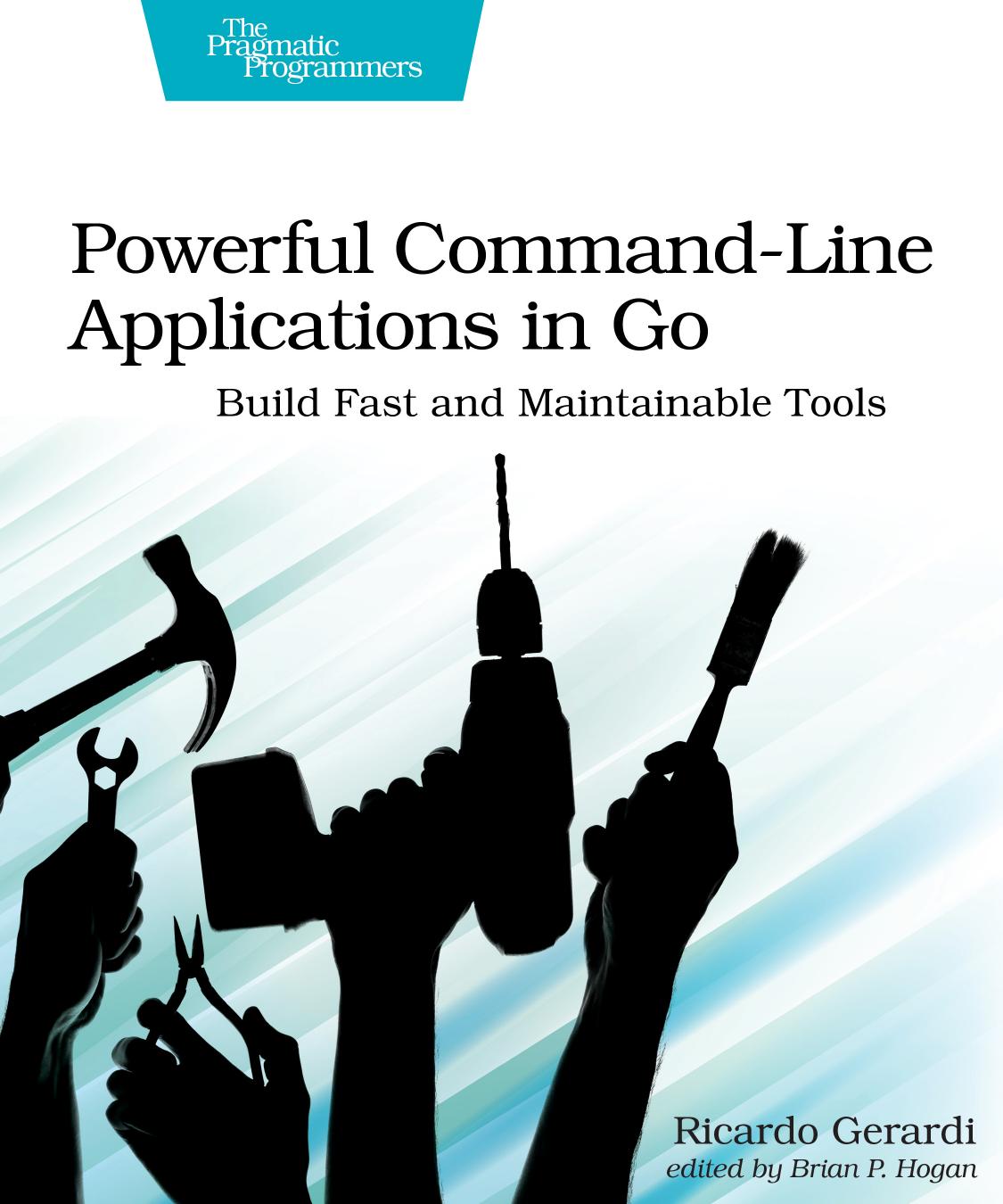
Product details:
ISBN 10: 168050696X
ISBN 13: 9781680506969
Author: Ricardo Gerardi
Whether you want to automate tasks, analyze data, parse logs, talk to network services, or address other systems requirements, writing your own command-line tool may be the fastest – and perhaps the most fun – way to do it. The Go programming language is a great choice for developing tools that are fast, reliable, and cross-platform. Create command-line tools that work with files, connect to services, and even manage external processes, all while using tests and benchmarks to ensure your programs are fast and correct. When you want to develop cross platform command-line tools that are fast and reliable, use Go, a modern programming language that combines the reliability of compiled languages with the ease of use and flexibility of dynamic typed languages. Work through practical examples to develop elegant and efficient tools by applying Go’s rich standard library, its built in support for concurrency, and its expressive syntax. Use Go’s integrated testing capabilities to automatically test your tools, ensuring they work reliably even across code refactoring. Develop CLI tools that interact with your users by using common input/output patterns, including environment variables and flags. Handle files to read or persist data, and manipulate paths consistently in cross-platform scenarios. Control processes and handle signals, and use a benchmark driven approach and Go’s concurrency primitives to create tools that perform well. Use powerful external libraries such as Cobra to create modern and flexible tools that handle subcommands, and develop tools that interact with databases, APIs, and network services. Finally, leverage what you learned by tackling additional challenges at the end of each chapter. What You Need: Go 1.8 or higher, an internet connection to download the example files and additional libraries, and a text editor to write your programs.
Powerful Command Line Applications in Go Build Fast and Maintainable Tools 1st Table of contents:
1. Your First Command-Line Program in Go
Building the Basic Word Counter
Testing the Basic Word Counter
Adding Command-Line Flags
Compiling Your Tool for Different Platforms
Exercises
Wrapping Up
2. Interacting with Your Users
Organizing Your Code
Defining the To-Do API
Creating the Initial To-Do Command-Line Tool
Testing the Initial CLI Implementation
Handling Multiple Command-Line Options
Display Command-Line Tool Usage
Improving the List Output Format
Increasing Flexibility with Environment Variables
Capturing Input from STDIN
Exercises
Wrapping Up
3. Working with Files in Go
Creating a Basic Markdown Preview Tool
Writing Tests for the Markdown Preview Tool
Adding Temporary Files to the Markdown Preview Tool
Using Interfaces to Automate Tests
Adding an Auto-Preview Feature
Cleaning Up Temporary Files
Improving the Markdown Preview Tool with Templates
Exercises
Wrapping Up
4. Navigating the File System
Developing a File System Crawler
Testing with Table-Driven Testing
Deleting Matched Files
Testing with the Help of Test Helpers
Logging Deleted Files
Archiving Files
Exercises
Wrapping Up
5. Improving the Performance of Your CLI Tools
Developing the Initial Version of colStats
Writing Tests for colStats
Benchmarking Your Tool
Profiling Your Tool
Reducing Memory Allocation
Tracing Your Tool
Improving the colStats Tool to Process Files Concurrently
Reduce Scheduling Contention
Exercises
Wrapping Up
6. Controlling Processes
Executing External Programs
Handling Errors
Writing Tests for Goci
Defining a Pipeline
Adding Another Step to the Pipeline
Handling Output from External Programs
Running Commands with Contexts
Integration Tests with a Local Git Server
Testing Commands with Mock Resources
Handling Signals
Exercises
Wrapping Up
7. Using the Cobra CLI Framework
Starting Your Cobra Application
Navigating Your New Cobra Application
Adding the First Subcommand to Your Application
Starting the Scan Package
Creating the Subcommands to Manage Hosts
Testing the Manage Hosts Subcommands
Adding the Port Scanning Functionality
Using Viper for Configuration Management
Generating Command Completion and Documentation
Exercises
Wrapping Up
8. Talking to REST APIs
Developing a REST API Server
Testing the REST API Server
Completing the REST API Server
Developing the Initial Client for the REST API
Testing the Client Without Connecting to the API
Viewing a Single Item
Adding an Item
Testing HTTP Requests Locally
Completing and Deleting Items
Executing Integration Tests
Exercises
Wrapping Up
9. Developing Interactive Terminal Tools
Initializing the Pomodoro Application
Storing Data with the Repository Pattern
Testing the Pomodoro Functionality
Building the Interface Widgets
Organizing the Interface’s Layout
Building the Interactive Interface
Initializing the CLI with Cobra
Exercises
Wrapping Up
10. Persisting Data in a SQL Database
Getting Started with SQLite
Go, SQL, and SQLite
Persisting Data in the Database
Testing the Repository with SQLite
Updating the Application to Use the SQLite Repository
Displaying a Summary to the Users
Exercises
Wrapping Up
11. Distributing Your Tool
Starting the Notify Package
Including OS-Specific Data
Including OS-Specific Files in the Build
Testing the Notify Package
Conditionally Building Your Application
Cross-Compiling Your Application
Compiling Your Go Application for Containers
Distributing Your Application as Source Code
Exercises
Wrapping Up
People also search for Powerful Command Line Applications in Go Build Fast and Maintainable Tools 1st:
8 power list critical tasks
useful powershell commands
command line power user
how to open r commander in rstudio
Tags:
Ricardo Gerardi,Powerful,Command,Applications
You may also like…
Uncategorized
Computers - UNIX & Linux
Linux Installation Configuration and Command Line Basics 1st Edition Nathan Clark
Computers - Web Development
Let s Go Learn to build professional web applications with Go 2nd Edition A. Edwards
Computers - Programming
Computers - UNIX & Linux
Efficient Linux at the Command Line: Boost Your Command-Line Skills 1st Edition Daniel J. Barrett
Computers - Programming
Computers - Operating Systems
Computers - Programming



